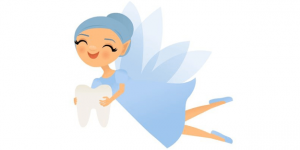

That means there won’t be anything official happening. Typically, tooth fairy day is more of a fun holiday. The play became an instant hit and the legend of the tooth fairy has been passed down from parent to child for many years. The play showed children a fun, princess-like fairy that came and collected children’s teeth and left a coin. That product quickly inspired a play to be created called “The Tooth Fairy”. One company jumped on the fairy craze and created a toothpaste called ‘The Fairy Wand Whitener”. Fairies were used for everything from encouraging children to do their chores to providing advice and even selling products. In the early 1920s, people loved imaginary creatures and a fairy craze swept the nation. People believe that the idea of a tooth fairy came about as a friendlier, more kid-friendly version of this superstition.Īnother theory is that it was a marketing campaign that took on a life of its own. It was believed that a small “tooth fee” was paid out to a child the moment they lost their first tooth. Many early writings that date back centuries talk about a tradition or superstition throughout Europe that revolved around children’s teeth. Since we are unsure which is true, we will take a look at both theories. Some people believe it came from early European superstition and myths that took on an American twist others believe that it was some type of marketing campaign that was so successful it turned into an American legend that has lasted for decades. There are several theories about how the tooth fairy legend came to be. When the tooth fairy visits, she will take the baby teeth and leave treats, presents, or money behind. Children are encouraged to leave their teeth under their pillow, or somewhere nearby, so the tooth fairy will stop by while they are sleeping. It is believed that this lovely fantasy creature spends her nights flying all across the world collecting the baby teeth of children. To celebrate her upcoming holiday, which is celebrated on February 28, we will take a look at who the tooth fairy is, the history behind how she came to be, and even provide you with some suggestions on how you can celebrate tooth fairy day with your family. So, it should come as no surprise to anyone that everyone’s favorite childhood friend – the tooth fairy – has her own holiday called the tooth fairy day.
#TOOTHFAIRY PEDIATRICS TV#
There are holidays that celebrate foods and drinks, such as coffee, donuts, pizza, and spaghetti, and holidays that celebrate movies and TV shows. We hope that we can learn more about lead-in-water problems and better protect children in the future.There really is a holiday for everything. This study's goal is to collect baby teeth from many Flint kids. Come back to the Pediatric Public Health Initiative website to learn more about study findings. Results may not be available until 1 to 2 years after tooth submission. The findings from this research are only meaningful when combined with many other kids’ results to look for patterns therefore, you will not receive the results of your child’s tooth analysis, unless specifically requested. This kind of test is not usually done so we do not know what one child's results mean. Teeth can be analyzed with a special machine to find out about lead exposure when a child was younger. We are trying to learn more about Flint’s lead crisis by studying children's teeth. You would also receive $25 for each baby tooth you mail us, for up to $75 for 3 teeth.You would first receive $25 by email for completing the survey.You could receive up to a total of $100 for being part of this study.Mothers must be 18 years or older and understand English.Flint kids born between January 1, 2011, and December 31, 2015.

We are inviting Flint parents and their child who are enrolled in the Flint Registry and said they were willing to be contacted about future studies.

You do not need to leave your home or have any in-person contact to be in this study. We hope you send us as many teeth as possible. Then, we will mail you an envelope with prepaid postage to send us your child's healthy and whole baby teeth when they fall out naturally. If you agree to join, you will complete an online survey that includes questions about where you lived and what your child ate and drank. Mona Hanna-Attisha and Michigan State University. The Flint Assessment of In-utero and at-Risk Young (FAIRY) study is led by Dr. CLICK HERE TO SEE IF YOU ARE ELIGIBLE AND START SURVEY Join the Flint Tooth Fairy Study


 0 kommentar(er)
0 kommentar(er)
